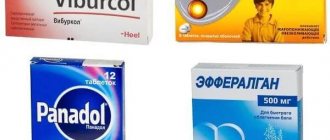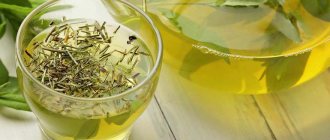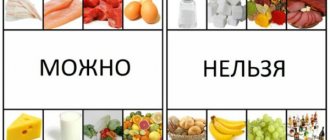A solution of potassium permanganate is a home first aid, and this is how it is often treated. Potassium permanganate, or potassium permanganate in common parlance, is one of the most popular antiseptics. Despite the huge selection of modern drugs, a solution of potassium permanganate is still used today for certain types of poisoning, inflammatory diseases, burns, and pustular lesions on the skin. The antiseptic and antimicrobial effect of potassium permanganate is due to the fact that when interacting with organic substances, an oxidation reaction occurs with the release of oxygen.
In clinical practice, a solution of potassium permanganate is used for washing and disinfecting wounds, douching, and rinsing. However, this common remedy is not as harmless as it might seem at first glance. When preparing a solution of potassium permanganate, you need to be very careful and careful. Being a fairly strong oxidizing agent, potassium permanganate in high concentrations can cause burns or swelling of the mucous membranes of the mouth, pharynx and esophagus. Therefore, it is important to strictly observe the recommended concentration and be sure to filter the ready-made solution so that it does not contain undissolved crystals.
Russian doctors began using a solution of potassium permanganate to treat wounds and postoperative sutures since the Great Patriotic War. It must be said that even today it is considered quite effective and efficient. As an antiseptic and anti-inflammatory agent, a solution of potassium permanganate is especially convenient when it comes to children. Judge for yourself, most often minor injuries are lubricated with iodine or brilliant green. Both of these products contain alcohol, which means they cause a burning sensation when applied. The peroxide fizzes and bubbles, and this frightens some kids. In addition, potassium permanganate is more practical. To treat wounds, abrasions or burns, you only need a couple of crystals, which means one bottle will last you a long time. Agree, this is important if you are relaxing, for example, in the country.
A strong, 5% solution of potassium permanganate, the color of red wine, is used to treat the edges of the wound and cauterize pustules on the skin. By the way, if you treat insect bites with this solution, the itching will not be so severe.
A weaker solution of 0.25%, deep pink in color, is used to wash wounds, cuts and abrasions. A light pink solution of 0.01% is used for gargling and gastric lavage in case of poisoning. A solution in this concentration is used in the treatment of stomatitis and gingivitis, as well as conjunctivitis, as an adjuvant.
Store the prepared solution of potassium permanganate in the refrigerator for no more than a day. A pharmaceutical preparation based on distilled water can last up to 10 days. This disinfectant is suitable for treating wounds on pets.
Not so long ago, even emergency doctors used a solution of potassium permanganate for poisoning. But for some time now it is not recommended to do this. Of course, potassium permanganate is not poison, and there is no great risk of swallowing undissolved crystals. However, potassium permanganate itself does not have any antidote properties. It does not neutralize harmful substances in any way, so it can hardly be called an effective remedy for poisoning. Potassium permanganate is used to lavage the stomach, but you can just as easily drink a large amount of salted water and induce vomiting. By the way, in Europe, saline solution was always used for gastric lavage in case of poisoning. One of the few cases when you cannot do without a solution of potassium permanganate is poisoning with codeine-containing drugs and morphine. It is also useful to remember that in case of analgin overdose, a weak solution of citric acid will help, and sulfonamides will be neutralized by soda.
Let us remind you that if vinegar essence, turpentine, acids or ammonia are ingested, gastric lavage is strictly prohibited. To reduce the impact on the mucous membranes, give the victim to drink beaten eggs with sunflower or other vegetable oil or a large amount of milk with the yolk mixed in it.
Please note that a solution of potassium permanganate leaves indelible brown spots on tissues and skin. To remove them, for example, from your hands, you will need a solution of ammonium sulphide (a teaspoon in a quarter glass of water). Stains on linen and clothes are removed with a mixture of peroxide and lemon juice, table vinegar or regular “White”.
Useful article? Share the link on VKontakte
In case of poisoning, potassium permanganate is often used to combat intoxication of the body.
A similar solution for gastric lavage was first used in 1950, and this product is still widely used today.
Potassium permanganate - what is it?
Potassium permanganate is usually called dark purple crystals. When the product gets into the water, it begins to dissolve, coloring it. In medicine, potassium permanganate is called potassium permanganate.
The main property of such a powder is its antiseptic effect, which appears due to the possibility of the appearance of active oxygen.
Today there are practically no analogues to such a powder that will react with ordinary water and treat people in case of poisoning. The main property of potassium permanganate in case of poisoning is its oxidizing effect.
After entering the stomach, the solution triggers the following processes:
- All chemical compounds begin to take on a form that is not dangerous to the body. Washing as a result of alcohol poisoning is especially useful.
- Inside the stomach, a solution of potassium permanganate is capable of destroying various bacteria, which become the culprits for the deterioration of a person’s condition.
Before using potassium permanganate, it is recommended to find out how to properly make the medicinal liquid and what contraindications there may be.
The effect of potassium permanganate in various types of poisoning
The popularity of potassium permanganate (common name - potassium permanganate) is due to its good work with chemical poisoning and organic intoxication. Gastric lavage with a manganese solution quickly deactivates harmful substances, stopping the absorption of the poison.
Food poisoning. Contact of potassium permanganate with organic matter forms active oxygen. Aggressively oxidizes biological compounds, destroying cell walls. Breaks down bacteria and viruses, potassium permanganate solution acts as a powerful antiseptic. Organic toxins are broken down and washed out through vomiting.
Chemical poisoning. If intoxication with minerals/chemicals occurs, gastric lavage will neutralize the active ingredient. Rapidly oxidizing, the poison will stop acting.
Alcohol poisoning. Oxidation of chemicals and organics works great in case of alcohol overdose. Harmful ingredients are converted into safe ones as soon as potassium permanganate is in the stomach.
Indications and contraindications
Many people know that potassium permanganate in case of poisoning can quickly alleviate a person’s condition. For treatment, two types of solution are used:
- Weak.
- Strong.
For ordinary food poisoning or light chemicals, it is recommended to use a weak solution of potassium permanganate. A strong solution is used very rarely and is more often used externally.
Using a strong product, wounds and purulent skin areas are wiped. It can also be used to treat burns.
Despite the benefits of the product, potassium permanganate cannot always be used and you need to know some contraindications for using the product:
- The solution should not be used by people with hypersensitivity.
- Gastric lavage is not performed in case of mucosal irritation.
- Prohibited for allergies.
Potassium permanganate should be used carefully to treat young children. Although it can be used to lavage the stomach of infants, this is prohibited at home.
Properties of the mineral
Its main effect is antiseptic.
Potassium overdose
Nausea and vomiting bile: reasons
Chicken broth for poisoning
This is possible due to the property of releasing “aggressive”, that is, in active form, oxygen as a result of joining with elements of organic origin (for example, with proteins of human skin).
There are a few compounds in nature that also easily enter into chemical reactions at room temperature, like manganese.
Feasibility for toxemia
Used as an antiseptic
Is it possible to drink potassium permanganate if poisoned? It is appropriate to use a solution of potassium permanganate in case of poisoning, due to its ability to oxidize a considerable number of compounds of both organic and inorganic origin. In other words, potassium permanganate in case of poisoning can:
- disinfect, rendering many chemical components and substances (alcoholic drinks, surrogate drinks, toxins) inactive;
- destroy the cell walls of more than half of the microbes - sources of intoxication.
Indications
Today this remedy is in great demand in medical practice. Conventionally, a line is drawn between a strong and a less concentrated solution. A weak one is used against poisoning, and a more concentrated one is used to treat wounds or prevent purulent complications during surgical interventions and trauma cases.
Contraindications
In case of poisoning, manganese is allowed to be used not only by adults, but also by children, including infants. Although this is one of the easiest antiseptics, it also has contraindications.
Bleeding in the gastrointestinal tract
Gastrointestinal bleeding is a contraindication for use
If, during toxemia, vomiting with blood or a black tint is observed, this indicates bleeding of intracavitary origin with damage to the blood vessels of the esophageal tract, duodenum or stomach.
This phenomenon is likely with any intoxication, as a result of repeated incessant vomiting or the presence of a peptic ulcer, gastritis, malignant tumors, or cirrhosis in the victim.
In such a situation, it is prohibited to perform gastric lavage with any solutions, induce a gag reflex, and take liquids and medications.
The most appropriate action is to call a team of doctors.
Toxemia with alkalis or acids
In this situation, gastric lavage with potassium permanganate is prohibited. This is due to the risk of developing deep burns and internal bleeding.
This procedure is performed in a clinical setting using a flexible probe.
Atopy and allergic phenomena
May cause allergies
Water with potassium permanganate forms a solution that can cause allergies in people who are prone to such reactions. Therefore, potassium permanganate cannot be used for:
- atopic dermatitis;
- obstructive bronchitis;
- urticaria in chronic form;
- bronchial asthma;
- allergic rhinitis.
Childhood
Even a weakly concentrated solution of the drug is not recommended for use in cases of intoxication in children under 18 years of age.
This is due to the rather aggressive oxidative ability of the substance, and the mucous membrane of the internal organs in children is very delicate. Therefore, there is a risk of cauterization and the formation of ulcers on its surface.
Solution for poisoning
Almost all mild poisoning is recommended to be treated with a light solution of potassium permanganate, which is used for gastric lavage.
But there is little information about the preparation of a remedy for the stomach.
In order for gastric lavage to be high-quality and effective, you will need to keep the drug in the stomach for as long as possible.
If you induce vomiting immediately after the drug enters the stomach, then there will be no result. In this case, the effect will be the same as after washing with plain water.
It is recommended to drink potassium permanganate during rinsing, then wait for a while and only then artificially induce vomiting.
In some cases, vomiting appears on its own after using such a drug.
To make the desired solution you can go in several ways:
- You need to pour a little powder into a small volume of water and make a strong product, then add water, diluting the medicine to the desired pale pink color.
- There is another method of preparation, where it is enough to dilute 3 crystals of potassium permanganate in a liter of liquid. This consistency is suitable for gastric lavage. The main thing is to carefully dilute the crystals in water and be sure to strain everything.
In order not to harm your health, it is imperative to filter the potassium permanganate solution. Crystals may not always dissolve, and when washed, they can leave burns on the mucous membrane.
At home, filtration can be carried out by passing the finished liquid through 8-10 layers of gauze.
Next step
Since it is not entirely easy to rinse the stomach at home, a strict sequence of actions should be followed. After the toxic product has been removed from the stomach through vomiting, you can proceed to the main stage. If there are no contraindications, then you can start gastric lavage. To do this, you can use solutions from products that can be found in any medicine cabinet or in the kitchen (we will talk about them later).
After preparing the drink, the victim should be seated on a hard chair and given the liquid to drink. If an adult is poisoned, then he needs to take at least half a liter of solution at a time. If possible, more is possible. It is necessary to completely fill the stomach with the prepared drink so that the walls of the organ begin to stretch. This way the solution can get into every fold and thoroughly wash out the toxin.
After this, it is necessary to provoke the gag reflex again. Of course, gastric lavage is not the most pleasant event. However, this is the most effective method for food poisoning.
Gastric lavage
Only after preparing the correct solution is gastric lavage allowed. In order for the poisoning procedure to be carried out efficiently, you will need to follow these recommendations:
- The solution must be prepared in large quantities; one procedure requires about 3 liters of potassium permanganate.
- For the first cleanse you need to drink about a liter.
- Next, it is necessary to artificially induce vomiting if it does not appear on its own. To do this, press the root of the tongue with your fingers or use a spoon and press on the root.
- After the first vomiting, you need to cleanse again. In case of poisoning, it is recommended to do 2-3 repetitions.
You can stop cleansing the stomach if only water begins to come out during vomiting, without impurities or food residues. In this case, the body will be completely clean and free of pathogens.
There are people who believe that potassium permanganate should be used to induce vomiting, because after taking it, vomiting quickly appears on its own.
But this is not entirely true, since vomiting can occur when drinking liquid in large quantities at a time, and not due to the composition of potassium permanganate.
In this regard, if it is not possible to prepare a solution, then use ordinary water, to which you can add salt or soda.
The main advantage of potassium permanganate is that the crystals can cleanse the walls of the gastrointestinal tract, where toxins, poisons and other substances accumulate during poisoning.
Application
Potassium permanganate is a solid crystalline substance of purple, almost black color. The compound has good solubility in water. Due to its antibacterial properties and ability to destroy pathogenic organisms, it has found application in medicine.
When taken, zinc oxide is formed, which forms a film on the mucous membranes of the stomach and intestines. This action protects organs from penetration of pathogenic bacteria.
The shelf life of the drug is limited. If the compound is stored in glass, the shelf life is five years. However, in case of poisoning, it is recommended to use the product fresh to obtain an effective solution. The prepared medicine is not stored for a long time; it quickly loses its beneficial properties.
Currently, it is almost impossible to buy potassium permanganate; dispensing is carried out only upon presentation of a prescription. This is due to the fact that the compound is used to create narcotic and explosive drugs.
What effect does potassium permanganate have on poisoning? Why is it used in adults and children?
Action:
- Promotes the gag reflex, kills toxic bacteria,
- In case of poisoning with certain types of poisons, potassium permanganate is able to neutralize them, turning them into compounds that do not pose a danger.
A solution of potassium permanganate is not recommended for use in cases of poisoning in children to avoid burns from accidental inhalation of vapors of the substance. Babies are not always able to provoke vomiting; prolonged presence of liquid in the stomach can also lead to burns.
How to dilute a compound to obtain a medicinal liquid? It is necessary to use liquid from potassium permanganate in case of poisoning carefully and carefully. Such a remedy is prepared by carefully following the instructions. An incorrectly diluted medicine can lead to serious changes in the body.
Manufacturing stages:
- Several crystals of potassium permanganate are poured with boiled and cooled water,
- Mix thoroughly with a plastic or wooden stick, the liquid turns out to be dark burgundy in color,
- The solution is left for seven minutes to settle.
- Carefully pour half of the liquid into another container, filtering it through several layers of gauze or bandages,
- Add boiled water until the solution turns a faint pink color.
If these rules are followed, the concentration of the liquid medicine is approximately 0.1%.
It is important that the solution is weak. Using a strong product can cause burns to the mucous membranes of the stomach and esophagus.
Precautionary measures
Since the powder is considered an active and strong substance, it is recommended to know safety precautions before using a crystal-based solution.
When preparing a solution, the following rules must be taken into account:
- The solution must be prepared in a transparent glass container so that the dilution process can be seen.
- Filtration of the liquid is required before external and internal use.
- If a strong solution gets inside the stomach, methemoglobinemia and burns may occur.
With methemoglobinemia, a person’s body begins to lack oxygen. It becomes insufficient for the normal functioning of organs and tissues.
The kidneys take the first blow of the pathology, after which other organs suffer.
If a strong solution accidentally enters the body, you will need to urgently call an ambulance for medical assistance.
In this case, treatment can be carried out with an antidote, namely methylene blue solution. It is used only for internal administration in a precise dose. Providing such assistance at home is almost impossible.
In addition, in case of an overdose of potassium permanganate, the antidote will need to be administered in large quantities, which also adds danger, since not every hospital or clinic has a large amount of such a drug.
It is recommended to simply prepare weak liquids for rinsing; they will be effective in any case, but will not harm your health.
It is worth noting some rules for storing healthy powder. In order for the properties and effect to be preserved, and for the crystals not to become poisonous, you will need to follow these rules:
- The storage container must be tightly closed.
- The product should be kept as far away from sunlight as possible.
- The humidity in the storage area should not be high.
It is forbidden to shake containers with crystals, as in some cases the container may explode. It is potassium permanganate that is used for fireworks.
How to properly rinse your stomach
How is potassium permanganate produced in case of poisoning? It is permissible to use the medicine in case of intoxication with certain chemical compounds, food, berries, etc. How much potassium permanganate should you drink if you are poisoned?
How to drink:
- Prepare two liters of liquid,
- Drink one liter of potassium permanganate in large sips to provoke the urge to vomit,
- If there is no vomiting, the victim is given three small spoons of salt per half liter of water,
- It is possible to provoke vomiting by pressing on the root of the tongue,
- Drink the second liter of potassium permanganate solution and the next four clean water in small sips and induce vomiting.
After the procedures, the liquid coming out of the stomach should be transparent, without impurities. Then it is given to the victim to completely cleanse the body. The use of cleansing enemas is acceptable.
How potassium permanganate helps with poisoning
Even a person who does not drink alcohol and tries to eat right can face poisoning. Potassium permanganate must be kept in your home first aid kit.
Having received poisoning, a person will immediately begin to wash out his stomach. In case of poisoning, it gives an antiseptic effect. This occurs due to the contact of oxygen with organic components, its active substance is released. Potassium permanganate does not cause vomiting on its own. It is caused by excessive fluid intake. And potassium permanganate serves to cleanse the wall of the gastric mucosa, thereby ridding it of poisonous and toxic substances in case of poisoning.
In addition to its low price, it is easy to prepare and effectively affects pathogenic bacteria:
- substances related to a number of chemicals, alcoholic beverages will enter a stage devoid of danger and activity;
- The microorganisms causing the poisoning die by combining with the antiseptic solution.
Powder diluted in water will help only if it is consumed fresh. After a short period of time, the solution will turn brown. This indicates its oxidation and loss of its auxiliary effect on toxic substances.
Rules for preparing a solution of potassium permanganate for gastric lavage
If a victim washes out the stomach due to potassium permanganate poisoning, you should take into account some rules indicating how to drink potassium permanganate during poisoning. This solution can have a negative effect on the body, including poisoning. These rules include:
- After opening a tube of potassium permanganate, do not inhale the crystals.
- Use glass containers to dissolve potassium permanganate.
- After stirring, carefully ensure that all crystals dissolve. To be safe, strain the colored water through cheesecloth folded in four. This will prevent the crystals from damaging your stomach.
- Store the powdered substance in protected places. If stored incorrectly, its explosive properties may be activated.
- If after use there is still potassium permanganate left in the container, it needs to be poured out. It will not bring any benefit if you repeatedly flush the gastrointestinal tract. Potassium permanganate oxidizes quickly.
- An allergic reaction to potassium permanganate is common. Therefore, testing should be done before use. Recommended for initial use.
- If drug poisoning is detected, the use of potassium permanganate will not bring any results.
To prepare potassium permanganate in case of poisoning, you should dilute the powder in water yourself or purchase an already prepared mixture at the pharmacy. In the first case, you will need a liter of water (preferably boiled) and crystalline powder. Throw two grains into the water, no more. Chat thoroughly. Make sure that the color does not acquire a dark or saturated shade. The correct color is light pink. A mandatory procedure is filtering through several layers of gauze. This will prevent the crystals from penetrating into the stomach, which will cause a burn to the mucous membranes.
If you have a ready-made concentrated mixture, dilute strictly according to the calculation with 1 thousand ml of water and 3-4 drops of the mixture. The water must also be boiled. Room temperature. It is recommended to drink in small sips. After a few minutes, trigger the gag reflex. To do this, you need to press on the base of the tongue. When purchasing a ready-made product, adhere to the production date and its end date.
After consuming the diluted product, induce vomiting immediately. Do not allow potassium permanganate to remain inside. Otherwise, you can get poisoned by it. If there is no vomiting, you need to drink one or two more glasses of clean water.
It doesn’t take much effort for an overdose of potassium permanganate to occur. It is enough to exceed the number of crystals and dissolve in water. Children are susceptible to this. Potassium permanganate in case of poisoning is allowed for children from 7 years of age and in a less concentrated form than for adults.
Excessive content of potassium permanganate crystals in water used for gastric lavage will instantly burn the mucous walls of the gastrointestinal tract. The oral cavity and larynx will be no less affected. The person will feel nausea followed by vomiting. There is a risk of swelling of the affected organs.
In practice, the following symptoms were observed:
- the victim experiences blood disorders;
- the kidneys and liver stop functioning normally;
- state of shock;
- the occurrence of diseases associated with the abdominal cavity;
It is difficult to confuse an overdose of potassium permanganate. Symptoms differ from other poisonings. They are recognized:
- by the occurrence of heavy breathing;
- sudden onset of diarrhea;
- sudden onset of the gag reflex;
- severe cramping pain in the stomach;
- the tongue and oral cavity acquire a purple tint;
- redness of the skin;
- the occurrence of seizures;
- the appearance of weakness throughout the body;
- loss of consciousness.
If at least one symptom of poisoning occurs after using potassium permanganate, you should immediately call emergency services.
Symptoms of manganese vapor poisoning
Chronic manganese intoxication is usually observed. The brain is most sensitive to excess potassium permanganate. KMnO4 is a neurotropic poison. When continuously introduced into the body, it selectively damages nerve cells. Degenerative changes in the cerebral cortex cause the development of parkinsonism.
The phenomenon of “marganism” was first described in 1837 by James Cooper. Chronic inhalation of vapors in high concentrations at work is known as manganese madness.
Poisoning develops in stages:
- The initial stage is characterized by functional changes. There is a slow reaction, mood swings, leg cramps, and slight trembling of the fingers. On the part of digestion - heartburn, epigastric pain.
- In stage II, symptoms of manganese poisoning occur, manifested by toxic encephalopathy. Organic changes occur in the brain. This can be seen by the frozen gaze, rare blinking. Atrophy of the muscles of the legs and hands begins. Patients have difficulty climbing stairs.
- At stage III of potassium permanganate poisoning, impaired coordination of movements is detected. Trembling is noted in the lower extremities at rest and during walking. The patient's face takes on the appearance of a mask. Facial movements are weakened. Speech becomes monotonous. Personal degradation is progressing.
If a woman inhales potassium permanganate, an allergy occurs. A severe burn of the respiratory tract is accompanied by swelling of the larynx. Progressive narrowing of the glottis can cause asphyxia (suffocation).
When taken orally
Acute manganese poisoning is accompanied by “metal fever.” The main damaging factors that cause tissue burns are caustic alkali and atomic oxygen. These substances are released as a result of the reaction of manganese with human tissues. They cause burns to the mucous membranes of the digestive system and larynx. If you swallow potassium permanganate, the following symptoms will appear:
- severe burning sensation in the throat, increasing during swallowing;
- heartburn and pain in the stomach;
- increased salivation;
- vomiting with blood streaks;
- pain along the burned esophagus;
- blood from diarrhea.
The mucous membranes of the throat and mouth are swollen and acquire a dark brown color with a purple tint. As swelling increases, the flow of oxygen through the narrowed larynx is sharply limited. The patient experiences difficulty breathing, leading to asphyxia.
Poisoning is accompanied by depression of cardiac activity. An overdose of potassium and the toxic effect of manganese on the myocardium leads to the development of collapse - a critical decrease in blood pressure.
Brain damage causes seizures at the onset of poisoning. After absorption of potassium permanganate, patients experience anxiety, limb spasms—shaking paralysis. In severe cases, burn shock develops with a fatal outcome.
Use of potassium permanganate in medicine
KMnO4 is a medicinal product included in the group “Antiseptics for external and internal use”.
The pharmacological effect of potassium permanganate is determined by its oxidizing properties. When combined with tissues in the human body, atomic oxygen, caustic alkali, and manganese dioxide are formed.
Oxides combine with proteins to form complexes. In small quantities they have an astringent effect, and in large concentrations they cause tissue burns.
Indications for medical use of potassium permanganate:
- washing wounds with an aqueous solution of 2–5% concentration;
- lubricating ulcerative and burn skin lesions with the same solution;
- the deodorizing property of potassium permanganate is used during sore throat, stomatitis, for rinsing the mouth and throat;
- due to its antiseptic properties, it is used for gastric lavage during food intoxication;
- douching for fungal infections in women with a 0.02–0.1% solution of potassium permanganate;
- cleansing of the external genitalia of men in urological offices.
Attention! Potassium permanganate oxidizes many poisons.
Used for poisoning with morphine, alkaloid drugs, aconitine. A weak solution is used as an antidote for intoxication with organophosphorus compounds. After a snake bite, toxicologists inject a 3% solution of potassium permanganate into the wound.
Potassium permanganate poisoning
It’s a paradox, but you can get poisoned even with the medicine used for poisoning. If you dilute too much potassium permanganate in a small amount of water, you will get a solution that is too concentrated and dangerous to drink. The following symptoms are observed:
- severe pain in the esophagus and stomach caused by a burn of the mucous membrane;
- severe vomiting and dehydration;
- after a few minutes, diarrhea may begin because the liquid is absorbed quite quickly;
- the oral cavity and tongue acquire a purple tint;
- with a large overdose of manganese crystals, swelling of the larynx, convulsions, colitis, shortness of breath and redness of the skin are possible.
The following medications will help the victim: ascorbic acid, cyanocobalamin, pyridoxine. Even if the overdose is mild and symptoms are mild, it would still be wise to call an ambulance.
Potassium permanganate should be stored at home in a tightly closed container in a dark place inaccessible to children and animals. Potassium permanganate is capable of self-ignition when exposed to direct sunlight and strong shaking, so the substance should be handled with care and only for its intended purpose.
Милые проверенные путаны в Нижневартовске по вызову, пылкие и страстные, они такие игривые и раскрепощённые, что все твои потребности будут удовлетворены. Прелестницы ждут тебя. Встречаются исключительно с благодарными и благородными мужчинами, проверенные путаны в Нижневартовске по вызову, очень любят общаться с интересными людьми. Каждая анкета проститутки содержит подробную информацию и номер телефона.










